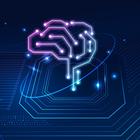My Notes on Artificial Intelligence
I’m interested in 3 main areas of Artificial Intelligence (AI) at the moment.
- Health and Open Science applications
- Creating Assistants and CoPilots for daily work or automating repetitive tasks
- Applying AI to the Public Relations profession
AI applied to health and Open Science
My interest in AI began in 2020 after being diagnosed with Multiple Sclerosis (MS), after which I started developing Gregory MS with my friend António Lopes.
Gregory MS is an AI that uses Machine Learning (ML) to identify clinical papers that are relevant innovations in the field of MS.
AI for Retrieval Augmented Generation (RAG) and automation
The Gregory MS project already has over 23,000 articles listed (January 2024). We have been looking for ways to integrate a chat interface that responds with the information found on the database.
My other project around automation is Johnny Five. That’s the name of my home computer that handles automating tasks as simple as controlling the lights or as complex as processing invoices found in my email inbox.
Public Relations and Artificial Intelligence
With the recent hype around AI, I have been working on using it both in my work at the Lisbon Collective and as part of my lesson plans for the School of Communication and Media Studies.
Some key concepts to understand Artificial Intelligence
- Machine Learning: A subset of AI that enables machines to learn from data, identify patterns, and make decisions with minimal human intervention. Machine learning algorithms improve their performance as the amount of data available for learning increases.
- Neural Networks and Deep Learning: Inspired by the structure and function of the human brain, neural networks are a set of algorithms designed to recognize patterns. Deep learning involves neural networks with many layers, enabling the modeling of complex patterns and decision-making processes.
- Natural Language Processing (NLP): The ability of machines to understand and interpret human language. NLP technologies are used in virtual assistants, translation apps, and sentiment analysis tools.
- Computer Vision: The field of AI that enables machines to interpret and make decisions based on visual data. Computer vision technologies are used in facial recognition systems, medical image analysis, and autonomous vehicles.
- Reinforcement Learning: A type of machine learning where an agent learns to make decisions by taking actions in an environment to achieve some goals. The agent learns from the consequences of its actions, through rewards or penalties.
- LLM: Large Language Models
- GPT: General Pre-trained Transformer
- AGI: Artificial General Intelligence. Refers to the ability of an AI assistant or agent to understand a broad range of subjects and contexts in the same way as a human does.
Key Players in Artificial Intelligence
- OpenAI
- Microsoft, main investor in OpenAI and using it’s technology to power existing apps like MS Word and Excel
- Google, with Gemini
- Grok by X.AI
- Meta, with LLAMA
OpenSource AI
Resources for open source AI
- Hugging Face, The platform where the machine-learning community collaborates on models, datasets, and applications.
- Katana ML, Open Source MLOps infrastructure available in the cloud or on-premise. Machine Learning APIs, based on state-of-the-art models.


























